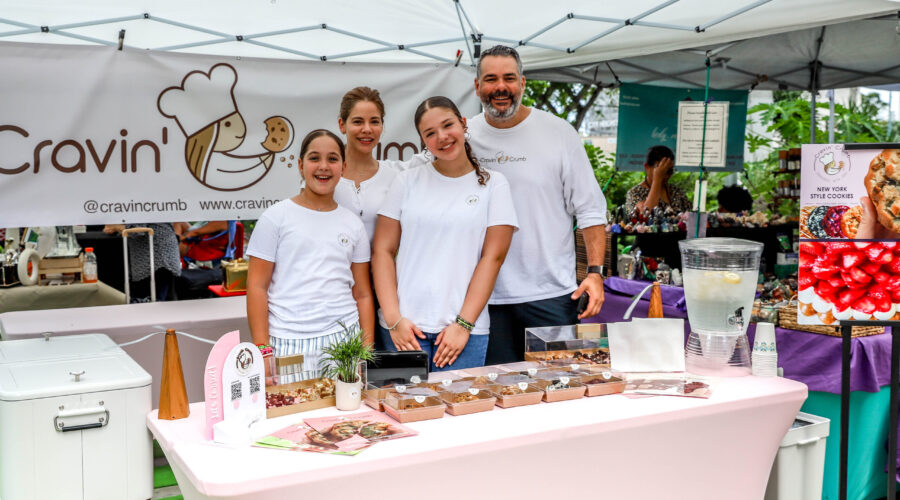How to Curate the Perfect Vendor Lineup for Your Miami Market
Introduction
Miami’s vibrant culture, culinary diversity, and year-round sunshine make it an ideal hub for markets and community events. But what separates a bustling, high-traffic event from one that fizzles? The answer often lies in vendor curation. The right vendor lineup draws crowds, boosts engagement, and keeps both attendees and sellers coming back.
In this guide, we’ll share how to curate an ideal mix of vendors—whether you’re organizing a farmers market, food truck event, or artisanal fair in Miami—and how Unite Worldwide, Inc. can help you do it better.
1. Why Vendor Curation Matters
In a city filled with options, guests expect more than just booths and tents. They’re looking for unique finds, local flavors, and quality experiences. A curated vendor lineup provides:
- Diverse product offerings (no oversaturation of similar items)
- Aesthetic and thematic alignment with the venue or community
- Higher vendor sales and satisfaction due to better foot traffic distribution
- A clear brand identity that helps your market stand out
Internal Resource: Learn how Unite Worldwide manages Miami markets.
2. Start With a Market Theme or Identity
What’s the mission or mood of your market?
- A wellness-focused event might feature fresh produce, herbal teas, and fitness vendors.
- A family-friendly weekend market benefits from face painting, baked goods, and handmade toys.
- A trendy urban night market pairs well with streetwear, vintage finds, and fusion cuisine.
Aligning vendors with a consistent theme helps with marketing, sponsorships, and customer retention.
3. Use Applications to Vet Vendors Thoroughly
A strong vendor application should capture:
- Business name, product photos, and social handles
- Licensing/insurance information
- Booth requirements and past event experience
- Links to menus, product catalogs, or press
Platforms like VendorSpace or Eventeny streamline this process.
Internal Tip: At Unite Worldwide, we offer pre-screened vendor pools across categories so hosts get vetted quality every time. See our process.
4. Build a Balanced Vendor Mix
Avoid having too many of the same type of vendor. A well-rounded Miami market typically includes:
- Food & Beverage: A mix of hot food trucks, baked goods, and fresh juices
- Farmers & Growers: Local produce, flowers, and honey
- Retail: Jewelry, clothing, ceramics, and home decor
- Experiential Vendors: Face painters, massage therapists, or mobile petting zoos
- Community/Nonprofit Booths: Local awareness groups or city departments
External Resource: The Miami Center for Architecture & Design often partners with public markets and cultural projects—great for community alignment.
5. Think About Traffic Flow and Booth Placement
Curating vendors is about more than just selection—it’s also about presentation.
- Anchor booths: Place the most popular vendors (like hot food or produce) at the far ends to encourage exploration.
- Visual breaks: Mix visually busy booths with calmer ones to avoid overload.
- Cluster zones: Group similar vendors (e.g., all skincare or all jewelry) for thematic flow.
This increases dwell time and helps vendors succeed equally.
6. Promote Your Vendors Before the Event
Help vendors maximize sales by building buzz. Promote them via:
- Instagram stories and event teasers
- Featured vendor spotlights in newsletters
- Google Event listings and local media outreach
Example: Highlighting your vegan baker or family-owned soap maker on Miami New Times adds authenticity and reach.
Internal Resource: Unite Worldwide offers built-in vendor promo packages for every market we manage. Explore our marketing support.
7. Make Room for Local Startups and Rotations
Reserve 10–15% of booth space for rotating vendors or first-time sellers. This introduces fresh products and gives small businesses an affordable entry point into the market scene.
Collaborate with groups like The Underline Miami, which supports emerging creatives and sustainable vendors.
8. Avoid These Common Curation Mistakes
| Mistake | Solution |
|---|---|
| Accepting too many vendors of the same product type | Set limits per category during application |
| Not vetting product quality or branding | Require high-resolution product photos |
| Ignoring customer interests or neighborhood demographics | Survey your audience or community partners |
| No clear mission or visual cohesion | Develop a vendor brand guide |
9. Unite Worldwide’s Approach to Vendor Curation
With a curated database of 300+ Miami-area vendors across food, fashion, wellness, and crafts, Unite Worldwide helps venues and cities create experiences that are:
- Local-first: Prioritizing small businesses and artisans
- Diverse: Cultural and economic representation across all categories
- Rotational: Keeping markets fresh with new vendor introductions
- Data-driven: Using sales performance and feedback to inform selections
We manage vendor curation for events in Coconut Grove, Coral Gables, Brickell, and beyond. Contact us to see how we can support your next event.
10. Internal Unite Worldwide Links to Explore
- Vendor Recruitment Services
- Partner With Us to Host a Market
- How to Join Our Vendor Network
- FAQ for Event Hosts
11. Helpful External Links
- Miami-Dade County Small Business Programs
- Florida Department of Agriculture Farmers Market Info
- Event Marketing Tips from Mailchimp
- The Underline Market Events
Conclusion
Vendor curation is more than checking boxes—it’s about building a story, a vibe, and a community. With the right mix of sellers, support, and strategy, your Miami market can become a thriving destination. Let Unite Worldwide, Inc. be your partner in that journey.


